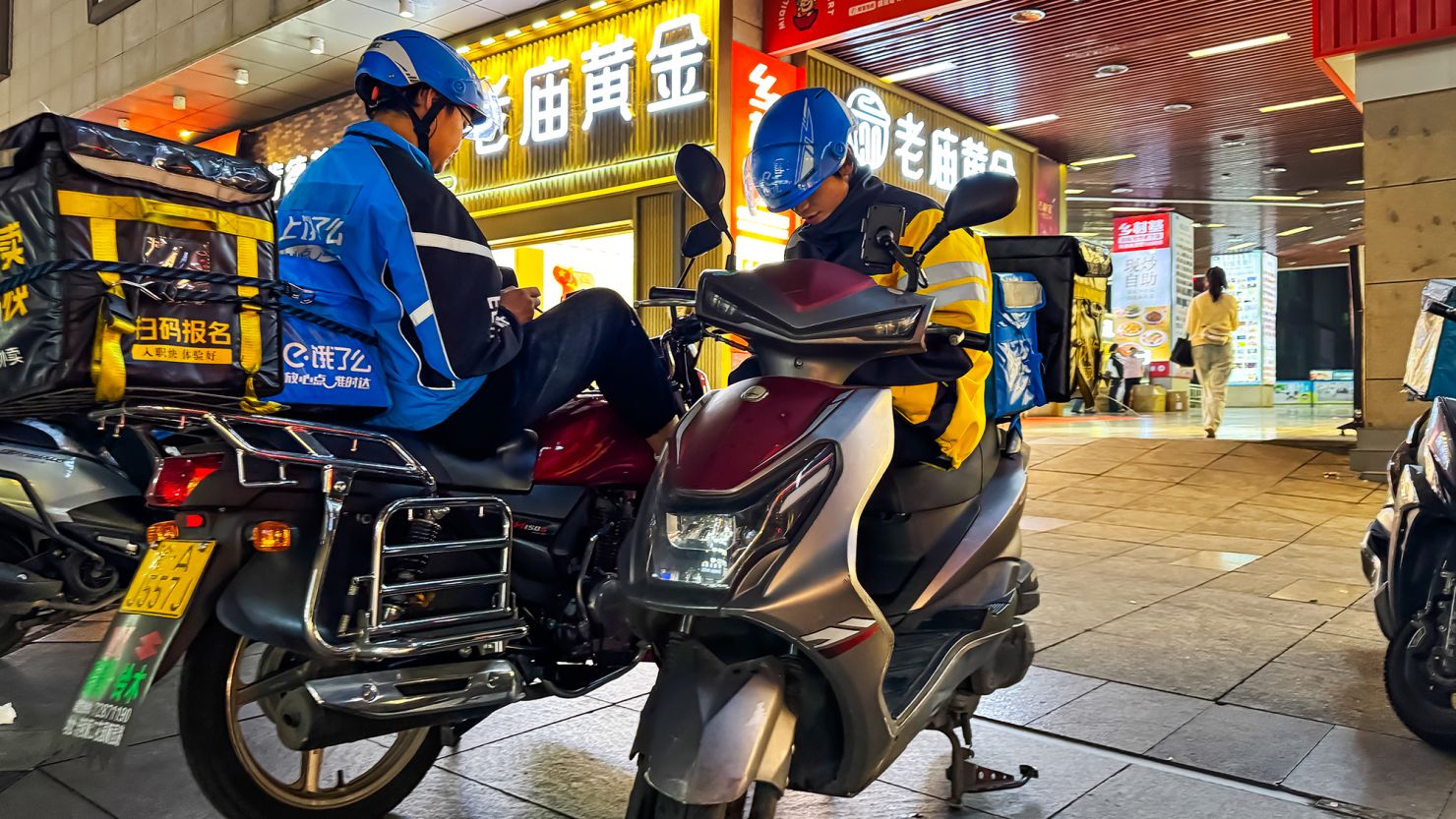In the world’s largest food delivery market, where over 12 million drivers crisscross cities daily, recent years have seen increasing tension and emotional breakdowns among the workforce. This phenomenon, particularly visible in China, reflects an industry that has ballooned to unprecedented heights but now faces serious economic pressures. Among the many incidents widely shared on Chinese social media, one video shows a delivery rider, distraught after receiving a negative review, smashing his phone in the middle of a busy road. In another, a worker, after being stopped for running a red light, kneels to beg a police officer for leniency, only to lash out in frustration by tipping over his motorcycle and fleeing. Crowds of delivery drivers have also gathered outside apartment complexes in protest, demanding fair treatment for their colleagues who have reportedly faced abuse.
Such events are no longer rare in China’s $200 billion food delivery industry, which has more than doubled in size since the Covid-19 pandemic. During the lockdowns, these workers became indispensable, sustaining millions of home-bound residents. However, what was once a relatively lucrative source of income for casual labor has transformed into a grueling and highly competitive occupation, with shrinking wages and harsher working conditions. Now, with China’s economy slowing, the challenges these workers face are being compounded by broader economic woes. On Friday, the National Bureau of Statistics reported that the country’s economic growth had further decelerated in the third quarter, expanding by just 4.6% year-on-year, barely exceeding expectations. This slowdown is squeezing delivery workers, as weak consumption and the ongoing property crisis ripple through the economy.
Professor Jenny Chan from the Polytechnic University of Hong Kong points out that delivery platforms are under increasing pressure to maintain low costs. As a result, workers must accept reduced earnings, despite long hours and grueling conditions. Most delivery workers are paid on commission, meaning that fewer and smaller orders cut directly into their already slim earnings. This forces them to work longer hours, often under unsafe conditions, just to make ends meet. The dominance of China’s two leading platforms, Meituan and Ele.me, further exacerbates this situation, as the lack of competition gives these companies free rein to dictate the terms of employment, according to labor rights experts.
China’s vast food delivery industry has grown rapidly since the founding of Ele.me in 2009. At the time, the app revolutionized how meals were delivered, and today, the market is valued at over $214 billion. By 2030, experts predict it will reach $280 billion. However, the ever-increasing market size has not benefited the workforce. Instead, delivery workers find themselves under enormous pressure to meet tight deadlines, prompting many to engage in dangerous behaviors such as running red lights or speeding through traffic.
One rider, who smashed his phone out of frustration, told Chinese state media that he felt the customer’s complaint was unjustified, yet the punishment dealt by the platform severely reduced his earnings. He lamented that the constant stress of the job was unbearable, asking, “What do they want from me? Do they want me dead?”
While profits soar for the platforms—Meituan alone posted $10 billion in revenue in 2023, a 26% increase—the pay for delivery workers has significantly diminished. In 2022, the average monthly wage for a delivery driver was reported at 6,803 yuan, roughly $956, according to a study by the China New Employment Research Center. This marks a significant drop from previous years, with some drivers reporting a monthly decrease of 1,000 yuan. For many, this cut in earnings is insurmountable, especially in an economy where the national average wage is only 1,838 yuan.
Gary Ng, an economist with Natixis, attributes much of the problem to China’s “downgraded consumption,” where economic slowdown leads to fewer, lower-value delivery orders. The trickle-down effect is profound. Lower customer spending not only reduces the value of each delivery but also diminishes tipping, a key supplement to drivers’ income.
Meanwhile, competition for delivery jobs remains fierce, exacerbated by China’s unemployment rate, which hit a record high of 18.8% in August. With a surplus of workers and a finite number of orders, drivers have little bargaining power. In an industry increasingly controlled by algorithms and monopolistic platforms, workers are stripped of the protections they once had. Restaurants, too, have had to adapt by slashing delivery fees or offering discounts to compete, further cutting into the drivers’ commissions.
The pressures are pushing many delivery workers to their limits. Videos frequently show dangerous encounters on the road, with workers taking risks to meet deadlines. Just last week, a driver in Hunan province ran a red light and crashed into a car. In another fatal accident, a delivery worker died after being struck by a tree felled during a storm. These incidents highlight the dangerous nature of the job, especially when drivers are paid per delivery rather than receiving a fixed salary.
For now, many drivers, like 35-year-old Yang, continue to tolerate these conditions. Having cycled through various jobs, Yang says that while the delivery industry is “not as good as before,” it still offers flexibility. Drivers can work longer hours for more pay, or they can take time off when needed. Yet, the sense of being trapped in an unsustainable system lingers, as drivers across China continue to grapple with diminishing pay and increasingly dangerous working conditions.









